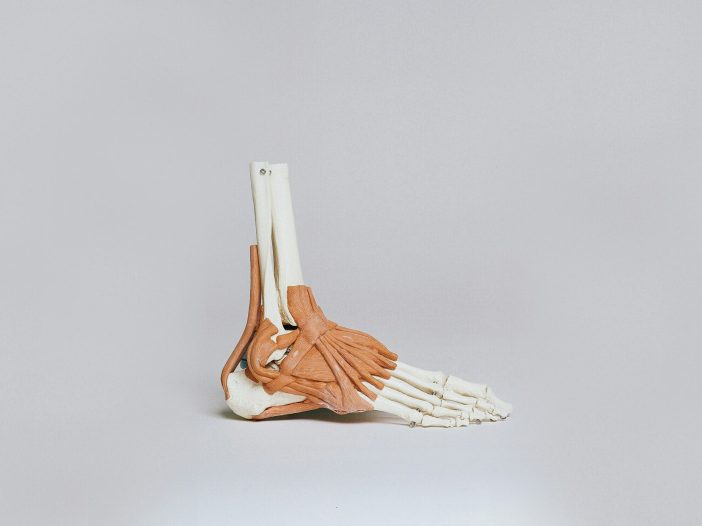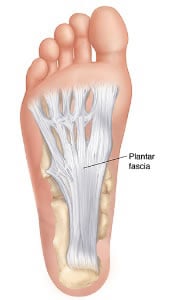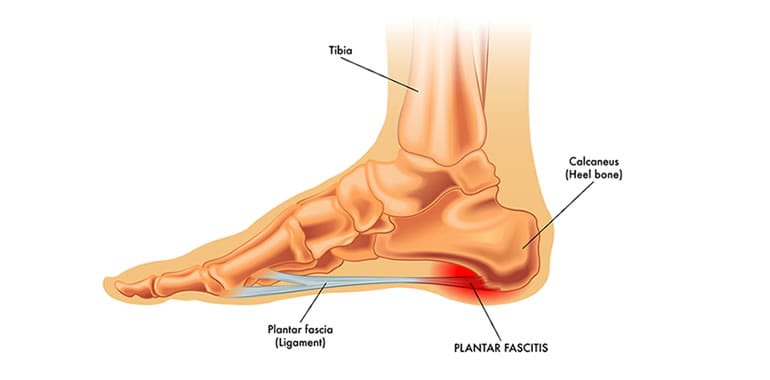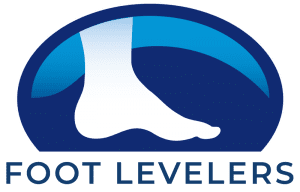
Experiencing long-term foot pain? The root may be plantar plantar fasciitis. Roughly one out of ten individuals will experience plantar fasciitis at least once in their lives which makes it a very common injury. On top of it being common, many individuals who get plantar fasciitis have it reoccur repeatedly which makes it a stubborn and frustrating injury.
Many people know plantar fasciitis deals with the feet and causes pain but don’t understand why it occurs or how to treat/prevent it. When googling you will find generic responses of “stretch your foot,” wear good shoes” or “just rest,” but no specific guidance on where to start or how to treat it long-term. This can make you feel lost or overwhelmed when trying to manage your plantar fasciitis.
In this blog, we will break down what plantar fasciitis is so we can have an idea of how to proactively treat it. From there we will provide specific tips on how to treat and prevent plantar fasciitis pain both in the short-term and in the long-term.
What is Plantar Fasciitis?
In order to know what plantar fasciitis is, we need to break the term apart. Plantar fascia, is a ligament that supports the bottom of your foot. This tissue attaches from your heel to the front of your foot and helps bring stability to the longitudinal arches (arches that go from your heel to your toes) of your foot. The suffix – itis means inflammation. Therefore, plantar fasciitis means inflammation of the plantar fascia ligament that supports the bottom of your foot.
 What Causes Plantar Fasciitis?
What Causes Plantar Fasciitis?
So, what causes the inflammation? There are many ways that plantar fasciitis can be caused but some of the more common are:
- Tightness/weakness from activity
- Decreased elasticity of the ligament
- Age, obesity, and/or the way you walk and stand
No matter what the cause, the plantar fascia becomes inflamed through little tears in the ligament. The most common symptom and telling sign of plantar fasciitis is sharp pain on the bottom of the foot or heel that is especially present in the morning when you first wake up.
How Can You Treat and Prevent Plantar Fasciitis?
Treatment and prevention will be the same with plantar fasciitis – the key is addressing the pain at the source. The best option for long-term relief is through custom foot orthotics and physical therapy. There are also some at-home stretches you can do to relieve pain temporarily.
At-Home Stretches for Short-Term Pain Relief
 In order to improve tightness in the bottom of your foot, you need to stretch the ligament to prevent little tears in the plantar fascia that can cause inflammation. Here are some great stretches to incorporate a few times a day to improve the tightness of the plantar fascia:
In order to improve tightness in the bottom of your foot, you need to stretch the ligament to prevent little tears in the plantar fascia that can cause inflammation. Here are some great stretches to incorporate a few times a day to improve the tightness of the plantar fascia:
Foam rolling
Use a foam roller, tennis ball or water bottle. Place on the ground and roll with the whole bottom of your foot. Do this for a minute or so.
Plantar fascia stretch
Take your toes and gently pull them back towards your shin. You should feel the stretch on the bottom of your foot. Hold the stretch for 30 seconds and repeat a few times a day or as needed.
Calf stretches
Stand with your hands up against a wall and with the affected foot back. Keeping your knee straight, lean forward until you feel a stretch in your calf. Hold for 30 seconds and then repeat with your knee bent.
Towel scrunches
Begin seated with your bare feet on the ground, with a towel placed on the ground. Place your foot on the towel and using your toes try to grab the towel and pull it closer to you. Repeat this motion scrunching the towel under your foot. Perform 15 repetitions a few times a day.
Arch raising
Sitting in a chair with your bare feet flat on the ground, try to raise your arch up. Your toes and heel should remain flat on the ground and only the arch moves up. Be careful not to move your knee as this is not activating the right muscles. Perform 15 repetitions a few times a day.
Calf raises
In a standing position, using a wall, chair, or counter for balance if needed, raise up onto your toes slowly. Then slowly lower back down.The key is to perform slowly so that all your foot and ankle muscles have time to engage. Perform 10 repetitions a few times a day to begin.
While the methods above will help reduce some of your pain, if you want to treat your plantar fasciitis in the long-term you’ll need to use orthotics and physical therapy.
Custom Orthotics for Long-Term Support
Custom orthotics can drastically assist in helping speed up recovery and prevent future damage. Plantar fascia supports the arch of the foot, and custom orthotics support the plantar fascia.
PRO Therapy offers custom foot orthotics from Foot Levelers – made custom to your feet to help maximize the support given to the arches that are found in our foot. The important part when selecting any type of custom foot orthotic or insert is to have a professional examine your foot to make sure the orthotic is customized to be exactly right for your foot.
 Foot Levelers Custom Orthotics
Foot Levelers Custom Orthotics
Foot Levelers custom orthotics are a research-proven solution for plantar fasciitis, low back pain, ankle sprains/ankle instability, knee pain and many other musculoskeletal conditions. These orthotics are custom-built to balance and support your unique feet and body, and to suit the demands of your individual lifestyle and activities.
By balancing and supporting the feet, they help balance and support the spine, which can help relieve pain and improve your body’s overall biomechanics.
Related Content: How Effective are Custom Foot Orthotics?
Physical Therapy with PRO Therapy for Foot Pain
If your plantar fasciitis persists, partnering with us for physical therapy is the best way to eliminate your foot pain. We will be able to examine your concerns, whether injury or discomfort, in person and progress exercises to meet the specific needs that you need. A couple techniques we use and that are very effective in treating plantar fasciitis are taping and dry needling.
Physical therapy is a key treatment option for your plantar fasciitis, and offers the following benefits:
- Identify the cause and triggers in your specific case
- Create a personal care plan based on your ability level and daily activities
- Experience long term relief – not just symptom management
Related Content: Does Physical Therapy Treat Plantar Fasciitis?
Physical Therapy With PRO Therapy
At PRO Therapy you will always experience precise, caring, and one on one care from a Licensed Doctor of Physical Therapy – no tech aides, no rehab assistants, no personal trainers – to help you decrease pain by the time you walk out the door of your first session and create a plan to adhere to going forward.
If you want to make physical therapy a success, partnering with one of our Doctors of Physical Therapy is going to help you avoid future pain and resolve current pain.
We Love to Help People:
- Keep Active – So you can run after your kids all day, take your grandchildren to the park with ease, enjoy a nice round of golf, run or walk anytime that suits you.
- Stay Free From Painkillers – So you’re not always reaching in the cupboard for pills to ease the pain whenever it strikes, getting only a “quick fix” when you need a “permanent fix” – PLUS they’re no good for your long-term health, “mask” the pain and certainly don’t actually do anything to fix the problem.
- Avoid Dangerous Injections/Surgery – We’ll help you get to the root cause of what’s going on – so you don’t have to get to the point of having to face injections or surgery.
- Found Out What’s Wrong – We’ll help give you peace of mind and ensure that your problem is “corrected” and “healed” properly – also give you a set of exercises perfectly catered to you to help speed up recovery.
- Get More Enjoyment Out Of Life – So you can enjoy quality time with family and friends that your daily aches and pains steal from you – also finally get a good night of sleep without constantly tossing and turning.
 Read Now: Why Our Physical Therapy Team Are Amazing (And What They Have Taught Me)
Read Now: Why Our Physical Therapy Team Are Amazing (And What They Have Taught Me)
Are you ready to make physical therapy work for you? Give us a call! We offer complimentary phone and in-person consultations. We aim to meet our patients wherever they are in their journey and answer all questions we can to ensure a smooth experience at PRO Therapy. We want to help you make the best decision for you!
PRO Therapy is an Independently Owned Orthopedic Physical Therapy Clinic. At PRO Therapy, we treat back, knee, neck/shoulder, ankle/foot, and hip pain as well as sports injuries, surgery rehabilitation, and anything else that’s causing you pain. We want everyone to have exceptional care, better access to care and be able to complete the activities in life that make them happy – free from a life of painkillers, injections, or surgeries.
Do You Want to Be in Less Pain?
Maybe you’re left feeling Confused? Skeptical? Fearful? Anxious? Depressed? You’ve sought advice from other healthcare professionals, maybe even a Physical Therapist in the past, but nothing they seemed to say or do helped solve your problem.

